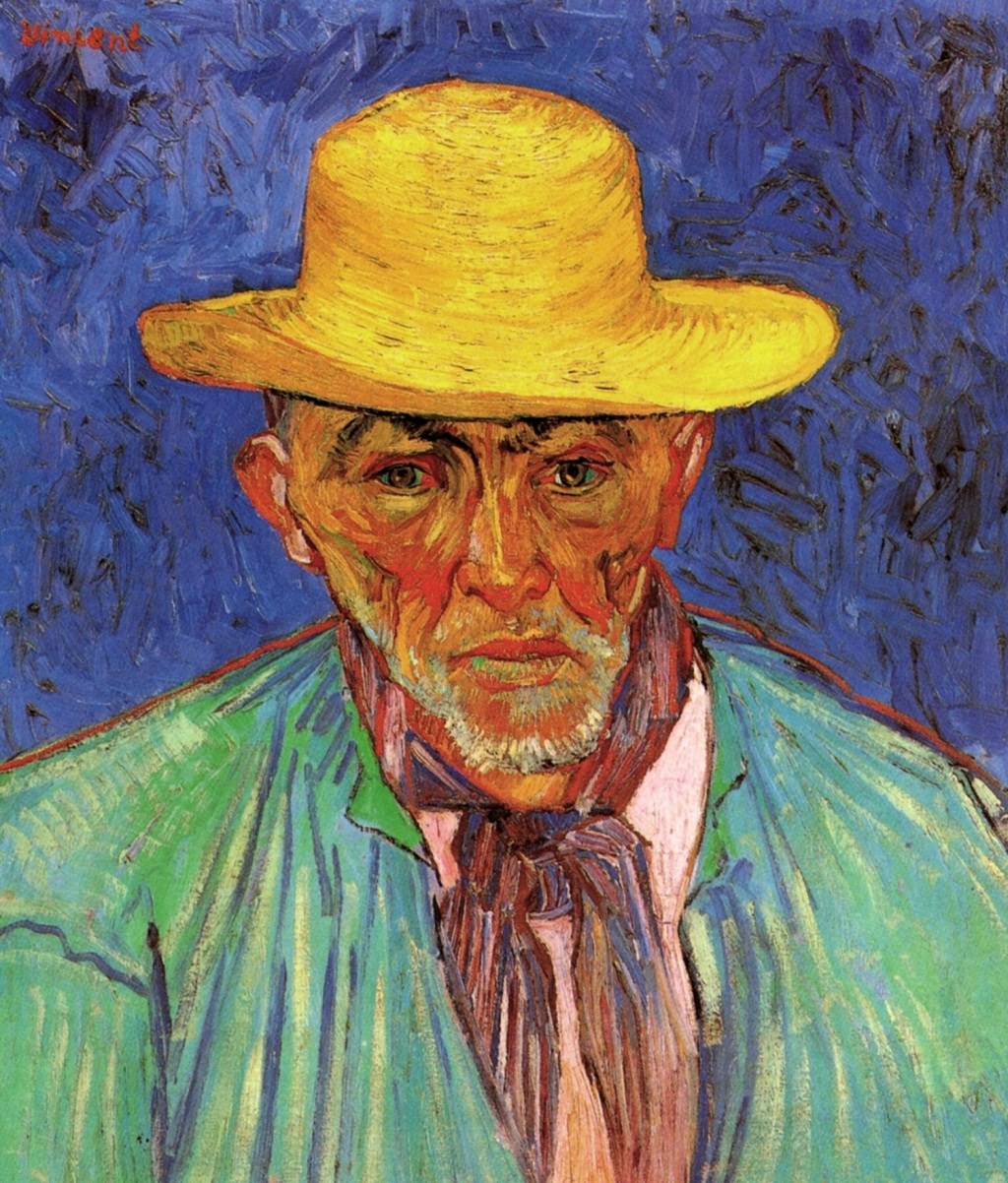Portrait of Patience Escalier, Shepherd in Provence
Appreciation

Portrait of Patience Escalier, Shepherd in Provence Nederland Vincent van Gogh Gallery and Appreciation
Vincent van Gogh's The Portrait of Patience Escalier marks a significant turning point during the artist's prolific Arles period. Meyer Shapiro describes the work as:
". . . perhaps the last realistic portrait of a peasant in the tradition of Western painting. It is perhaps also the only great portrait of a peasant."
In some ways this work encapsulates the best aspects of the entire breadth of Vincent van Gogh's career. Van Gogh always felt an affinity toward the common labourer. This is clear in many of his early Nuenen paintings and sketches as well as his copies of the works the painter Jean-François Millet who also favoured labourers and peasants as subjects. The choice of Patience Escalier clearly shows that Van Gogh never lost his love of "the true peasant race". And yet, in terms of style, this painting marks a radical departure from the peasant works of Van Gogh's Nuenen period and is even a stark contrast to the works he produced only a few months previously. In many ways The Portrait of Patience Escalier stands out as a pivotal work in Van Gogh's career.
In a letter to Theo (520) Van Gogh writes ". . . I am returning to the ideas I had in the country before I knew the impressionists". Vincent refers to this painting in his letter and it's noteworthy that he mentions specifically that his outlook toward his painting was returning to a period before he came Paris. During the two years he lived with his brother in Paris Vincent came to know many of the great artists of the time: Gauguin, Lautrec, Pissarro and Seurat to name a few. Their style and unusual new ideas would influences Vincent's own technique, but it's important to note that in letter 520 Van Gogh is suggesting that he is reverting to an earlier approach and, at the same time, moving beyond what he was able to learn from the Impressionists. Van Gogh was evolving into a new and compelling style that was uniquely his own.
Vincent's use of colour in The Portrait of Patience Escalier is bold and unusual. In a letter to Emile Bernard (B15) Vincent writes of the work: "This time again, the colour suggests the sweltering air of the harvest in the middle of the day, in mid-summer, and without that it would be a different picture." Jan Hulsker writes:
Although the portrait of Patience Escalier is certainly a remarkable and surprisingly colorful picture, it does not quite give the impression of heat and blazing sunlight that one would expect from Vincent's description. The most striking effect is not the red and orange of the face, but the bright yellow of the straw hat against the deep blue sky. Only when the old peasant was persuaded to pose for a second portrait a few weeks later (F 444 of c. August 29) did Vincent really manage to achieve the "exaggeration" he had had in mind.
While Hulsker is correct in stating that Van Gogh would accomplish the work he had in mind more successfully with the second Escalier portrait, this first work is nevertheless one of the more important paintings in Van Gogh's oeuvre.